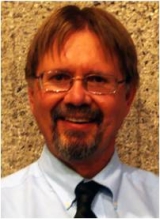 Tea Partiers railing against raising the debt ceiling have a valid point. Operating on perpetual deficits and debt is unsustainable. In fact, a perpetually growing government would be impossible under any circumstances. That’s pursuant to the dictum that nothing grows forever.
Tea Partiers railing against raising the debt ceiling have a valid point. Operating on perpetual deficits and debt is unsustainable. In fact, a perpetually growing government would be impossible under any circumstances. That’s pursuant to the dictum that nothing grows forever.
What the Tea Partiers tend to forget is that, in a well-balanced democracy, the public and private sectors grow as an integrated whole. If you want more people and more cars, you should expect a bigger Department of Transportation and more cops. More oil rigs and smokestacks? Bigger EPA. More Wall Street? Bigger SEC. It’s common sense; something the Tea Party is supposed to thrive on.
Now there may be some legitimate, philosophical disagreement about how many cops per thousand drivers or how much EPA per thousand smokestacks. There’s also the issue of where you want most of your government seated: in Washington, DC, or the statehouse. But presumably we all want the right-sized public sector pursuant to the American constitution.
Otherwise what? Anarchy? That’s not dumping the tax-laden tea; that’s sinking the whole ship of state. The Tea Party could be good for America, but it has to avoid the tendency to look like the Treason Party.
If we want the right-sized government, then we’d generally want a growing government as the American economy grows. Economic growth means increasing population times per capita consumption. In other words, more folks and more goings-on, entailing more feds and their local counterparts.
But there’s that dictum again: Nothing grows forever, and usually the right size is reached long before the limit.
So if you’re itching to fight the growth of government, walking the talk means supporting the transition to a stabilized, steady state economy. The only right way to stabilize the size of government is to stabilize the size of Wall Street, the banks, and for that matter, Main Street. That doesn’t mean central planning or stagnation; the idea is a dynamic steady state economy with different technologies and consumer preferences rippling through the market. But macroeconomic policies and level-headed consumer behavior help keep the whole shootin’ match at a sustainable size.
We’ve got a long way to go to establish the social and political will for a steady state economy with stabilized population and GDP. But in the current climate, the first step is obvious: A debt ceiling at the federal level must be matched by a debt ceiling in the private sector. Every new loan should be met with the closing of another. A dollar out; a dollar in. What’s good for the public goose is good for the private gander.
In the absence of conventional political parties with enough integrity to acknowledge limits to growth, the Tea Partiers have a chance to gain a new and ironic ally: Americans concerned with sustainability. If not, the non-partisan, steady state economy movement remains the only game in town. It’s one of those movements that starts in academia and, via the non-profit sector, moves into society at large, resonating with common sense at every step.
The steady-state movement seeks responsible political shepherding, not bringing down the government. It takes, as it were, steady statesmanship. Whether that’s something the Tea Party can handle will be a prime indication of its intelligence, integrity, and patriotism.
Thumbnail photo is from Wikimedia Commons: President George W. Bush signing the Economic Growth and Tax Relief Reconciliation Act of 2001 in the White House East Room in June 7, 2001






